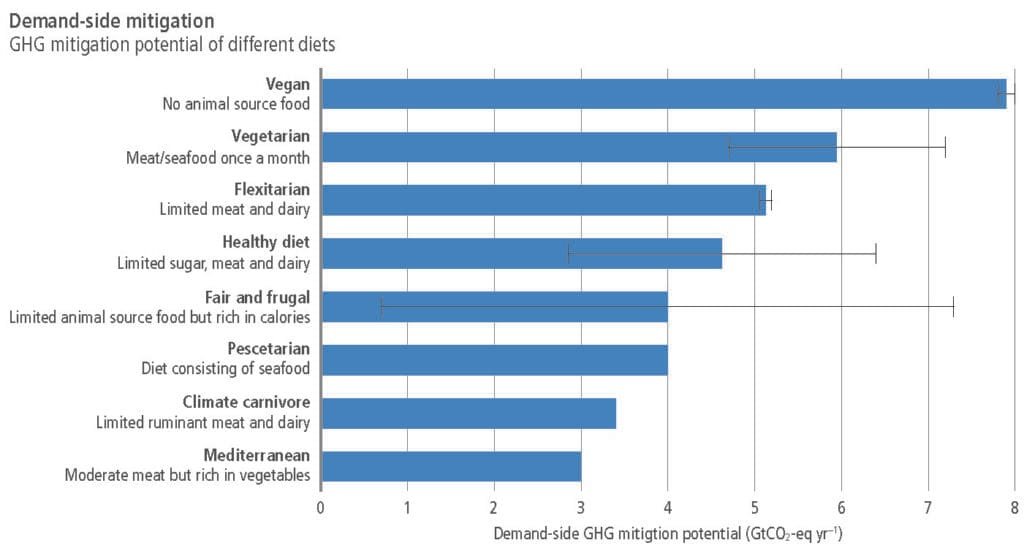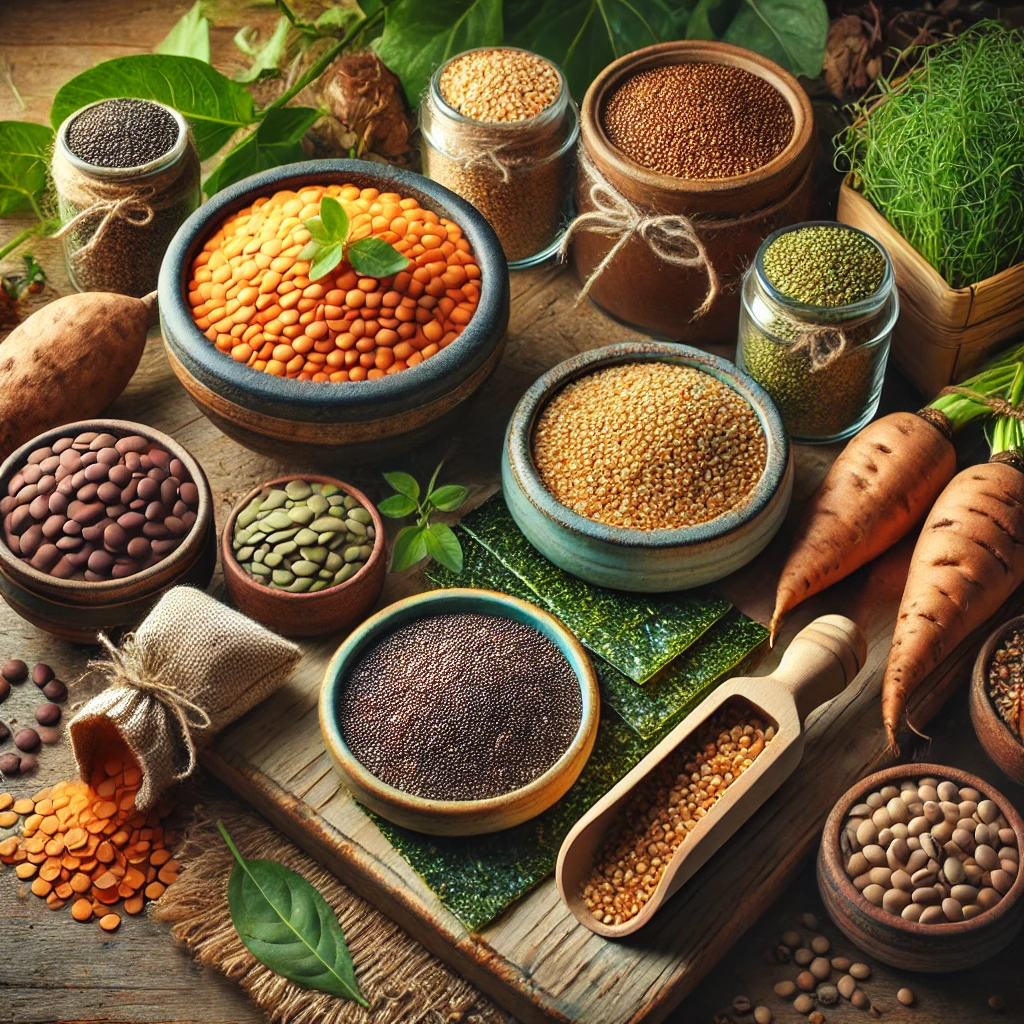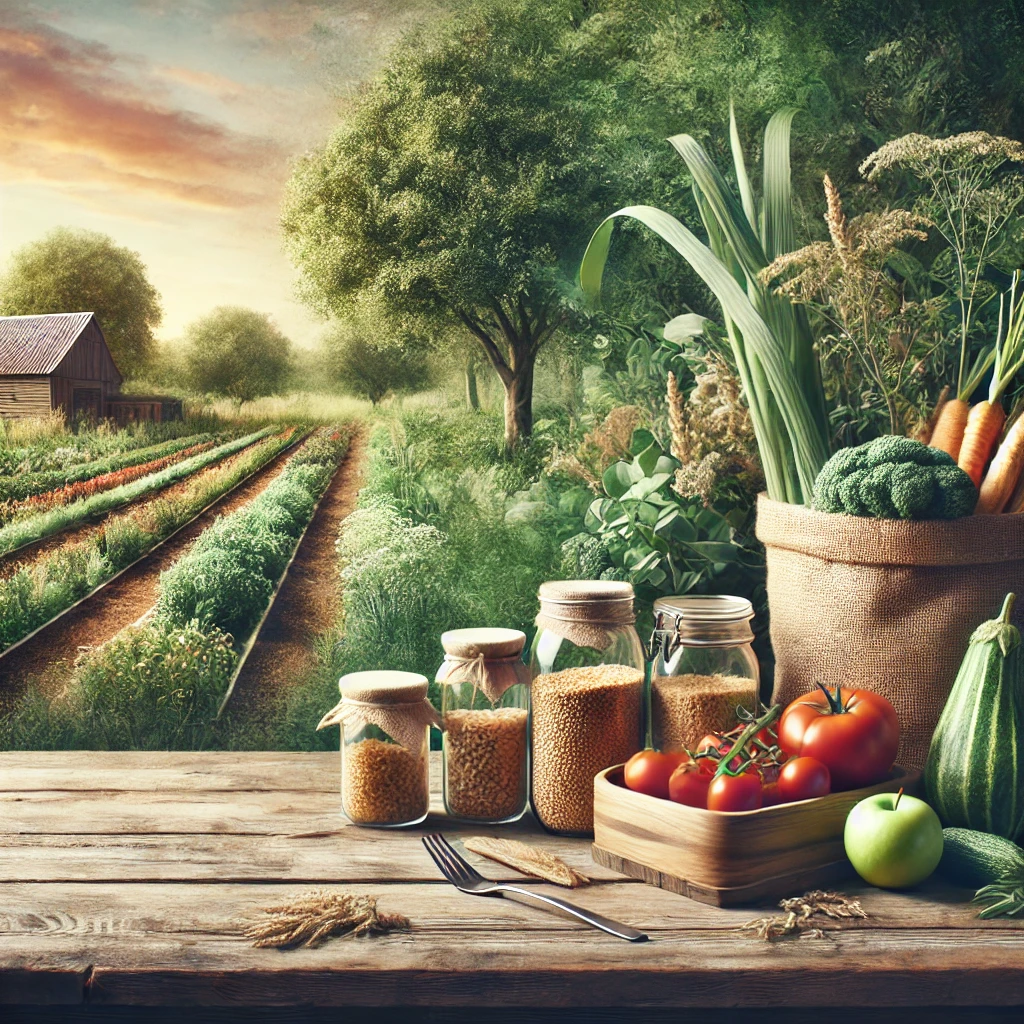In a world increasingly conscious of the environmental impact of our choices, our food habits hold significant potential to shape a sustainable future. Imagine this: you not only nourish your body but also contribute positively to the planet by choosing foods that tread lightly on our Earth’s resources. Welcome to the world of climate-friendly superfoods — nutritional powerhouses that align with eco-friendly practices. In this blog post, we delve into seven remarkable superfoods that are as kind to the planet as they are to your health.
| Aspect | Plant-Based Superfoods | Meat-Based Foods |
| Environmental Impact | Lower greenhouse gas emissions and water usage. | Higher emissions and significant water consumption. |
| Nutritional Profile | Rich in fiber, vitamins, and plant-based proteins. | High in saturated fats and cholesterol. |
| Resource Efficiency | Require less land and energy to produce. | Intensive land and energy use. |
| Soil Health | Improve soil through nitrogen fixation (e.g., lentils). | Often degrade soil due to overgrazing. |
| Adaptability | Thrive in diverse and challenging climates. | Limited adaptability to climate variations. |
Below is a figure from the IPCC report (source), which shows technical mitigation potential of changing diets by 2050 according to a range of scenarios examined in the literature. For simple understanding, longer the bar size in the figure below, higher the green house gas (GHG) mitigation potential, e.g. vegan diet (no animal source food) has the highest potential for lesser GHG emissions, hence more climate friendly than any other diet choices. It’s completely understandable that transitioning to a fully vegan diet may not be feasible for everyone, as it’s a personal choice. However, we can certainly explore a balanced approach by gradually reducing meat consumption in our diet. An article I wrote, which is also recommended for further read: The Climate Cost of Beef and the Plant-Based Protein Revolution.

1. Lentils: The Humble Legume Leading the Way
Lentils are small but mighty. These nutrient-dense legumes are packed with protein, fiber, and essential vitamins such as folate and iron. What makes lentils a climate hero is their ability to fix nitrogen in the soil naturally, reducing the need for synthetic fertilizers that contribute to greenhouse gas emissions. Moreover, lentils have a low water footprint compared to animal-based protein sources.
Why Choose Lentils?
- High in protein, making them a great alternative to meat.
- Low carbon and water footprint.
- Versatile: enjoy them in soups, stews, salads, or even as lentil patties.
Fun Fact: Lentils can thrive in semi-arid conditions, making them a resilient crop in the face of climate change.
2. Quinoa: The Protein-Packed Grain Alternative
Quinoa, often dubbed a “pseudo-grain,” is a complete protein, meaning it contains all nine essential amino acids. Grown predominantly in South America, quinoa’s adaptability to different climates and its ability to grow in poor soil conditions make it a sustainable choice.
Why Choose Quinoa?
- Gluten-free and rich in nutrients like magnesium and phosphorus.
- Requires less water than traditional grains like rice.
- Its cultivation helps sustain rural Andean communities.
Eco Tip: Support sustainable farming practices by choosing Fair Trade or organic quinoa.
3. Seaweed: The Ocean’s Superfood
Seaweed isn’t just for sushi rolls. This oceanic plant is a powerhouse of nutrients, including iodine, calcium, and antioxidants. Beyond its nutritional profile, seaweed farming is one of the most sustainable forms of agriculture, requiring no fresh water, fertilizers, or arable land. Additionally, seaweed absorbs carbon dioxide, helping mitigate climate change.
Why Choose Seaweed?
- Contains unique compounds like fucoidan, known for its anti-inflammatory properties.
- Supports marine ecosystems by improving water quality.
- Versatile: use it in salads, soups, or as a crispy snack.
Fun Fact: Seaweed farming could potentially feed the world’s population while combating ocean acidification.
4. Chia Seeds: Tiny Nutritional Giants
Chia seeds may be small, but they pack a punch. Rich in omega-3 fatty acids, fiber, and protein, chia seeds are a versatile addition to any diet. Their environmental impact is also minimal, as they require less water and energy to produce compared to other crops.
Why Choose Chia Seeds?
- Excellent source of plant-based omega-3s.
- Can be used in smoothies, puddings, and baked goods.
- Drought-tolerant crop, making them a sustainable choice.
Pro Tip: Soak chia seeds in water or plant-based milk to create a nutrient-rich pudding perfect for breakfast or dessert.
5. Sweet Potatoes: Earth’s Gift to Sustainable Eating
Sweet potatoes are not only delicious but also incredibly versatile and nutrient-rich. High in beta-carotene, fiber, and potassium, they’re a staple in many cultures worldwide. Sweet potatoes are hardy crops that require minimal inputs and can thrive in poor soil conditions, making them a climate-resilient choice.
Why Choose Sweet Potatoes?
- Packed with vitamins A and C, vital for immunity and skin health.
- Can grow in diverse climates, reducing dependency on resource-heavy crops.
- Perfect for roasting, mashing, or adding to curries and soups.
Eco Tip: Store sweet potatoes in a cool, dry place to extend their shelf life and reduce food waste.
6. Millet: The Forgotten Grain Making a Comeback
Millets are ancient grains that have been cultivated for thousands of years. They’re highly nutritious, gluten-free, and rich in magnesium, phosphorus, and antioxidants. Millets are drought-tolerant and require less water than other cereals like wheat and rice, making them a sustainable grain for the future.
Why Choose Millet?
- Highly adaptable to different climates, including arid regions.
- Can be used in porridge, salads, or even baked goods.
- Low glycemic index, making it ideal for diabetics.
Pro Tip: Experiment with different types of millet, such as pearl, finger, or foxtail, to add variety to your meals.
7. Black Beans: Protein and Sustainability in a Shell
Black beans are a staple in many cuisines, from Latin American to Caribbean dishes. Rich in protein, fiber, and iron, they’re a fantastic meat substitute for those aiming to reduce their carbon footprint. Black beans also improve soil health by fixing nitrogen, similar to lentils.
Why Choose Black Beans?
- High in plant-based protein and essential nutrients.
- Easy to grow and store, reducing food waste.
- Versatile: use them in soups, salads, tacos, or even desserts.
Eco Tip: Buy dried black beans in bulk to reduce packaging waste and save money.

The Bigger Picture
Incorporating these seven climate-friendly superfoods into your diet is more than a personal health choice; it’s a step toward a sustainable future. By choosing foods that require fewer resources to grow and contribute positively to the environment, you’re playing a part in combating climate change. Moreover, diversifying your diet with these superfoods not only benefits your health but also supports global agricultural systems.
Practical Tips for a Sustainable Kitchen
- Buy Local and Seasonal: Reduce the carbon footprint of your meals by purchasing locally grown produce.
- Minimize Food Waste: Use leftovers creatively and store food properly.
- Support Ethical Brands: Choose products from companies that prioritize sustainability and fair trade practices.
- Educate Yourself: Learn about the environmental impact of different foods to make informed choices.
A Call to Action
Climate change is a collective challenge, but small, conscious decisions can make a big difference. By embracing climate-friendly superfoods, you’re not just nourishing your body — you’re supporting a movement toward a more sustainable and equitable food system.
So, which of these superfoods will you add to your shopping list? Start small, experiment with recipes, and enjoy the journey of eating for a better planet. Together, we can build a future where food sustains both our health and the Earth.
Save our planet for the next generations!



